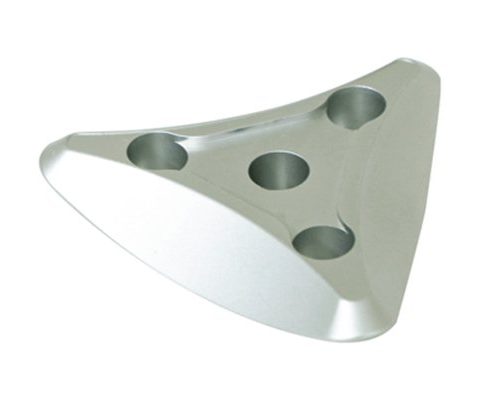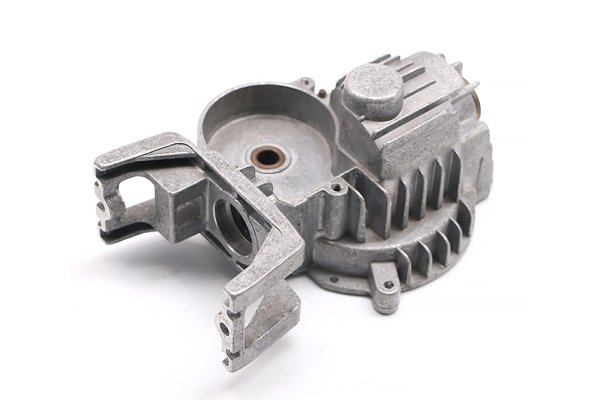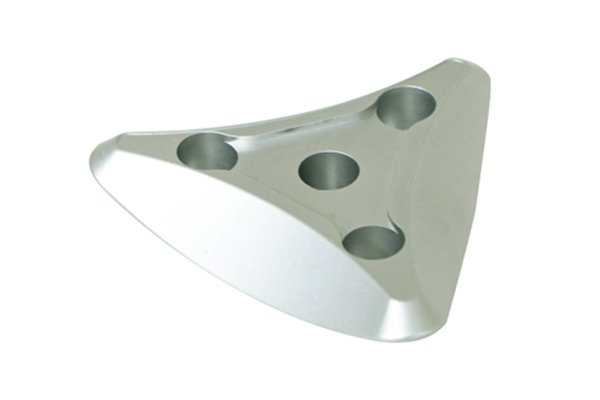Creating precision components in today’s manufacturing world is a bit like conducting a symphony orchestra; every part, from the instrument to the musician, must play its role flawlessly to create a harmonious outcome. Enter the world of four-axis CNC milling—a robust method that not only enhances efficiency but also unlocks precision and versatility in machining aluminum parts. If you’ve been curious about how a little twist (or four, to be precise) can dramatically improve the end result, read on.
Understanding how CNC (Computer Numerical Control) milling works starts us on a trip through this fascinating realm of technology and precision engineering. Buckle up as we dive into the whys and hows of four-axis CNC milling.
What Is CNC Milling?
First things first: let’s clarify what CNC milling is. Simply put, CNC milling is a machining process that uses computer-controlled machines to cut and shape materials into specific forms. Think of it as a very advanced form of sculpting, where the chisels are replaced with rotating tools, and the sculpture, in this case, is often metal—aluminum being a popular choice.
The beauty of CNC milling lies in its ability to produce intricate shapes that would be nearly impossible to achieve using traditional methods. The computer controls the tools with incredible precision, making adjustments on the fly and ensuring that the final product meets exact specifications.
The Four Axes: A Twist on Tradition
When we talk about a conventional CNC milling machine, we usually refer to a three-axis system—X, Y, and Z coordinates define movement. But what about that fourth axis? In a four-axis CNC milling machine, a fourth axis (often referred to as the A-axis) allows the workpiece to rotate around the X-axis. Imagine your workpiece doing a little dance while the cutting tools perform their magic around it, allowing for complex geometries and cuts that are beyond the reach of a standard three-axis mill.
Why Does This Matter?
You might be wondering why this four-axis twist is such a big deal. Picture this: you’re trying to carve out a highly detailed figurine. Would you find it easier to manipulate your chisel from one side, or would rolling the figurine around give you a better angle and easier access to all those nooks and crannies? That’s the advantage of four-axis machining! It allows for continuous motion and can be more efficient in terms of setup and execution.
Precision Over Everything
In industries where precision is key—like aerospace, automotive, and medical manufacturing—having that extra degree of movement can be a game-changer. But wait, let’s break it down a bit further to really understand just how significant this is.
Enhanced Accuracy
With four-axis CNC mills, engineers can achieve remarkable accuracy. If you’re machining critical components, even a millimeter off can lead to disastrous results. The rotating axis enables parts to be machined from multiple angles in a single setup, reducing the likelihood of errors.
Reduced Setup Time
Anyone who has worked in manufacturing knows that time is money. Switching between setups can be a drudgery, not to mention the potential for mistakes. Four-axis machines can handle multiple angles in a single setup, significantly reducing the time and effort involved in switching machines or repositioning parts.
What About Aluminum? Why Is It So Special?
Now, you may ask: why are we focusing on aluminum in conjunction with four-axis CNC milling? Well, aluminum is like the gold of fabrication—it’s lightweight, versatile, and has excellent machinability.
Versatile Material Properties
Aluminum offers a combination of low density and high strength, making it a favorite for applications where weight saving is crucial. From aircraft to automotive parts, its ability to withstand varying environmental conditions while maintaining performance makes it priceless. Additionally, aluminum’s thermal conductivity allows for rapid heat dissipation, which is vital in industries like electronics.
Applications of 4 Axis CNC Milling in Aluminum Machining
The applications of four-axis CNC milling when working with aluminum are as diverse as the industries using them. Let’s explore a few applications that exemplify the possibilities.
Aerospace Components

In aerospace, precision is non-negotiable. 4-axis CNC milling can produce lightweight components that meet sky-high standards without adding unnecessary weight. Thin-walled structures, complex geometries like turbine blades, and intricate components for landing gear are just a few areas where 4-axis milling shines.
Automotive Industry
In the automotive sector, manufacturers are constantly looking for ways to innovate and improve efficiency. 4-axis CNC milling makes it easier to create components like transmission housings and engine brackets that balance strength and weight, driving performance without sacrificing durability.
Electronics and Consumer Goods
With electronics becoming increasingly compact yet powerful, aluminum parts need to fit precisely while also allowing for efficient heat dissipation. 4-axis CNC machining helps create intricate designs that are both functional and stylish in consumer products, from smartphones to gaming consoles.
Achieving Complex Designs with Ease
Four-axis CNC milling isn’t just about adding an axis; it opens doors to creating complex designs and shapes effortlessly. The additional axis allows for compound angles and contours, letting designers visualize their creations in ways previously deemed impossible.
Intricate Detailing
When producing intricate designs, having a machine that can reach all angles without needing constant repositioning is akin to having a talented artist creating a masterpiece. The detailing can be crisp, clean, and precise—no more hidden sections that are impossible to reach!
Efficient Material Usage
Another benefit is improved material usage. With the ability to machine more complex shapes efficiently, scrap material can be minimized. That’s good news for both the budget and the environment!
Considerations When Choosing 4 Axis CNC Milling
Not all roses come without thorns, however; opting for a four-axis system comes with its own set of considerations. Understanding these factors can help ensure you make an informed decision.
Cost Implications
While 4-axis CNC milling offers numerous advantages, the initial investment can be higher than conventional machines. It’s crucial to weigh the expected return on investment (ROI) against the initial setup costs.
Complexity of Operation
The learning curve for 4-axis machines can be steep, especially for teams used to working with three-axis systems. Training and adaptation may be necessary to fully capitalize on the advanced capabilities of four-axis milling.
Bringing It All Together: Final Thoughts
So, to answer the question—how do 4 axis CNC mills enhance precision in machining aluminum parts? They offer unparalleled accuracy, reduced setup time, and the ability to create complex designs. This technology streamlines the manufacturing process and fosters innovation across various industries—from aerospace to consumer electronics.
By embracing this advanced method, manufacturers can achieve a new level of precision and efficiency. Just imagine the possibilities! As a reader, I encourage you to delve deeper into this world, asking questions and seeking knowledge. Whether you’re a hobbyist exploring the realm of machining or a professional seeking to optimize operations, the wonders of four-axis CNC milling await your discovery.
Should you have any further inquiries or wish to explore adjacent topics—like how to transition to 5-axis machining or the best materials to work with in CNC milling—feel free to ask. Your journey toward knowledge is filled with exciting twists, and I’m here to guide you through it. Until next time!



